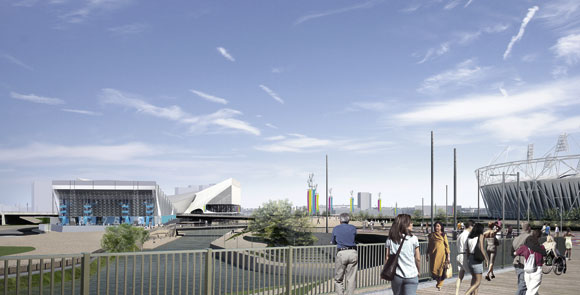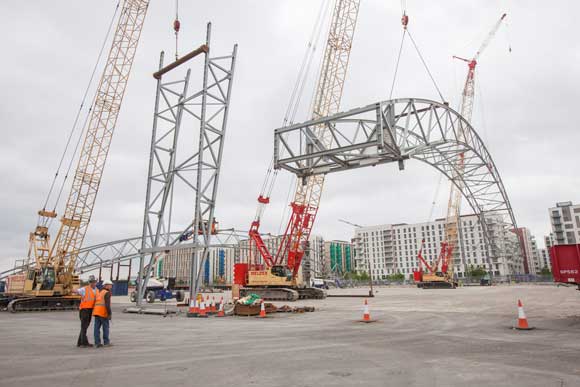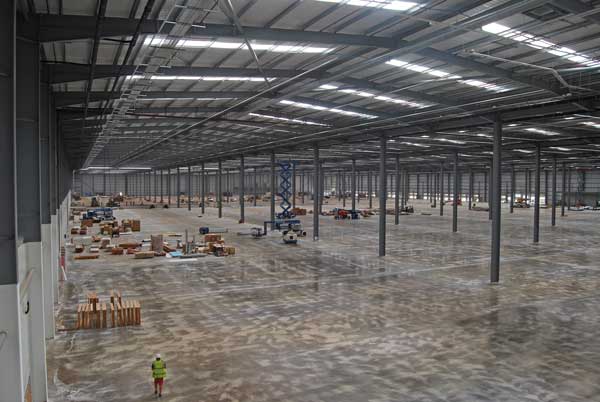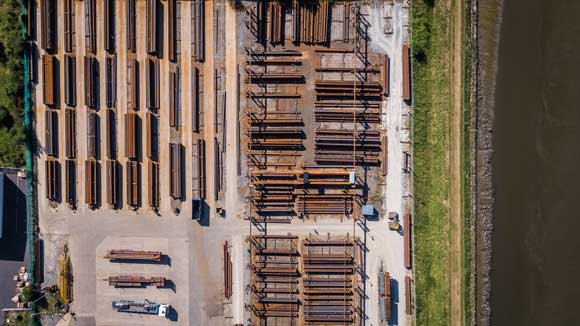Projects and Features
Shape of things to come
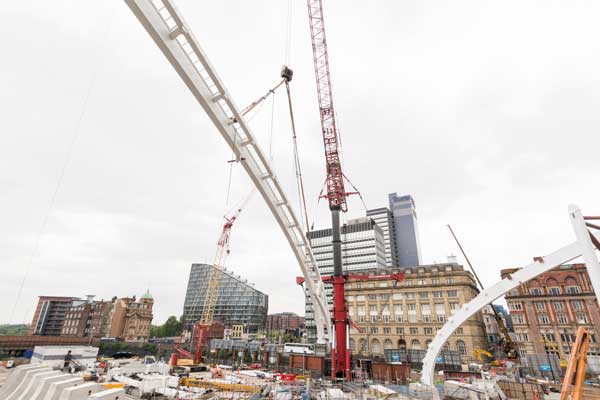
Manchester Victoria Station
The use of curved steel bent into shape by UK specialist steel bending companies is helping designers create elaborate landmark structures.
Bending steel sections to help create stunning architectural designs not only allows steelwork to show its flexibility in construction, the process is also very economical.
Section bending is a cost-effective way of changing the shape of a structure, as it is relatively inexpensive when compared to manufacturing a multi-faceted member.
There are two main types of bending used in construction: roller bending and induction bending.
The majority of curved sections used in buildings will be cold roller bent as this is the most cost-effective method of forming.
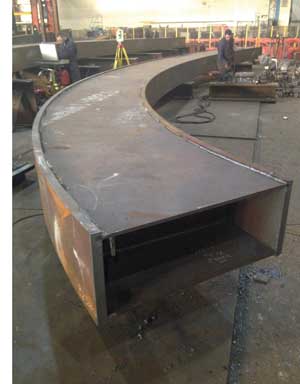 Companies have developed methods over the years to achieve tighter and more intricate bends, especially in closed sections, to enable architects to express themselves.
Companies have developed methods over the years to achieve tighter and more intricate bends, especially in closed sections, to enable architects to express themselves.
However, there may be sections that would deform locally because of the radius required. This is where induction bending is used. The section is heated up to around 1000°C and combined with a pivoted radial arm and pushing unit, tighter radii can be achieved.
Over the last 10 years, bending technology has advanced significantly, alongside fabrication techniques and machinery.
Tougher demands from customers have led to the introduction of more accurate and stronger machines.
Investment in machinery has meant that large sections can now be bent into shape by the UK’s leading specialist bending firms, steel sections that would have been too large a short time ago.
Buildings are being designed using higher strength steels which are harder to bend as bending requires the material to be taken beyond the yield strength.
The use of S460 steel means that bending companies need to exert up to 40% more bending power to create curves than they did 10-15 years ago.
This means that today most specialist steel bending companies have the capability to bend all sections from the smallest angle to the largest beam.
This gives engineers and architects the opportunity to use the most appropriate sections for their projects. The limiting factor is usually the radii, but using different bending methods can usually overcome this issue.
There has also been an increase in the use of closed sections (tubes, RHS, SHS etc) over recent years because of their relative strength-to-weight ratio.
“In order to create a sinuous and aesthetically pleasing structure, bent steel sections are an integral element of a project,” comments Simon Roberts, Architect at Wilkinson Eyre. “The complex designs that are so common today would not be possible without the bending process.”
The use of curved and bent steelwork is today highly visible, as over the last decade or so many of the most well-known buildings and structures have utilised steel bending in one form or another. For instance, all of the main London 2012 Olympic structures featured curved steel.
Wimbledon Centre Court has benefitted from curved steel with its retractable roof and this project was so successful that Court Number One will soon be under a similar steel roof, that will also utilise bending.
Another sporting showcase for the use of curved steel was last year’s Structural Steel Design Awards winner, Derby Arena, which includes a curved steel roof spanning up to 85m.
Airports throughout the world have curve appeal with bent steelwork clearly visible at Gatwick, Heathrow, Dublin, Dubai and Hong Kong.
In fact, curved steel is in more buildings than you might think. For example, cambered beams are used in floors for multi-storey buildings to allow for deflection of loading.
Sponsors
Steel Bending
Bronze: Barnshaw Section Benders Limited









